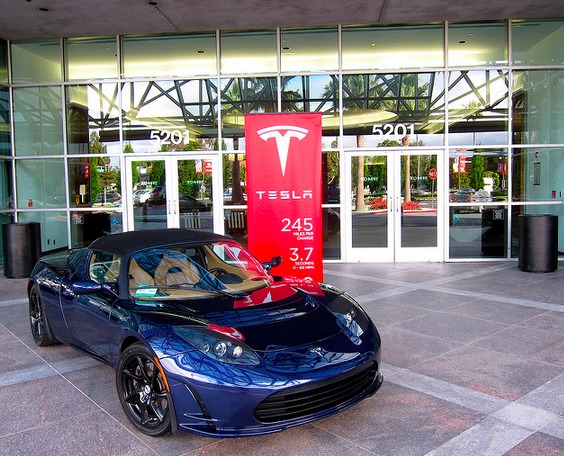There was an interesting article in New Yorker magazine a couple of weeks ago. In it, New Yorker staff writer and Harvard professor Jill Lepore systematically laid waste to the current cult of disruptive innovation.
Even casual followers of technology investing are probably familiar with “disruption,” which has been a popular buzzword lately, especially with venture capitalists. But exactly what does that mean for your portfolio?
It’s practically received wisdom that the road to success requires that your business model be not just incrementally better than competitors, but instead be so disruptive that incumbents will fail, their supporters and investors will be convulsed with a need to sell all their worldly possessions and (having lost the will to live) throw themselves into a volcano.
OK, I’m being a little facetious here, but not very.
Teapot tempest
Lepore’s article was clearly well researched and fact-checked. But her tone gave me the distinct impression that mostly she was tired of the concept and believed disruption’s adherents had allowed it to be hijacked in the service of some dubious agendas.
The original adherent was best-selling author (and fellow Harvard prof) Clayton Christensen. Christensen popularized disruption in the best-selling “Innovator’s Dilemma.” Christensen wasn’t especially thrilled by Lepore’s evisceration of his pet theory even though he agreed with several of her criticisms. In our current ultra-low-volatility world, the media, hungry for anything to move the controversy needle into the red zone, threw some gas on the fire .
I don’t think Vince McMahon will be offering these academic wonks a chance for a pay-per-view Caged Death Match. But the teapot tempest does lead to an obvious question: Is disruption something that investors and traders ought to value when looking for opportunities?
I’ve observed the tech scene close up for 30 years. I’ve seen more than one management fad burn bright, only to fade away when it turned out not to be “different this time.”
Painted pony
To me, disruption is simply the latest in a long line of failed attempts to reduce business success to a small number of steps that are repeatable across time and space. Success is never certain. It is fraught with danger and dead ends, involves at least as much luck and circumstance as talent and hard work, and is rarely repeatable, even by the people who have already succeeded.
The indefinite nature of the term “disruption” allows it to be a painted pony. Disruption is whatever somebody with an agenda (or a funded business plan) wants it to be. It’s a close cousin of “Modern Art,” a term that converts a relative construct to an absolute one.
Are there disruptors among the stock holdings in my technology portfolio? Probably. Just looking through the 50 names we currently hold, I can see a few. EnerNOC (ENOC) practically invented the energy-demand-response software segment, returning power (no pun intended) to energy-hungry businesses. And I suppose Shutterfly (SFLY) re-invented the commercial-printing business through its self-serve model. Plus Facebook (FB) and some of our other Software-as-a-Service holdings are doing plenty of disrupting.
But disruption isn’t a requirement for us. Unlike, say, consistent cash flow and a management that has the basics down pat.
Too often, it seems, you end up paying a premium for the disruption that isn’t always rewarded over time. For example, if 3-D printing is so darned disruptive, where is the carnage? Physical model makers? C’mon, get real. 3-D Printing has essentially been around for 30 years. Important patents have already expired. Prices have dropped by several orders of magnitude. Yet, mostly 3-D printing has enabled things that hadn’t previously been possible. All the manufacturers (with their warehouses of spare parts) that were going to be put under by just-in-time production? Still very much with us.
Long-time shareholders of Stratasys (SSYX) and 3-D Systems (DDD) have done well. But owners of more recent “disruptors” like Voxeljet (VJET), ExOne (XONE) and Organovo (ONVO)? Not so much.
Disruption vs. dominance
There are other pitfalls. Disruption sure gets a lot of validation when, for example, ride-sharing start-up Uber gets a $17 billion private equity valuation, despite not having been awarded a single patent. But that market largess can just as quickly disappear. Just look at cloud-storage vendor Box, suddenly scrambling for a lifeline in the absence of more P/E money or a path to an IPO .
Never mind what happens when two or more companies are doing the disrupting … side-by-side. How profitably can Zillow (Z) do any disrupting with Trulia (TRLA) and a half a dozen others alongside, vying for the same ad dollars and broker partners?
Lastly, how valuable is disruption if it doesn’t evolve into dominance? We own several companies that are doing a fine job of disrupting, but that’s not an end, only a means. We expect them to be top dog in a winner-take-all or winner-take-most market.
The bottom line is this: Disruption is fine. But cash flow and competitive advantages are better insurance against having a news release or an ill-timed headline disrupt your trading or investing thesis.
Try Covestor’s services with a free trial account. Or you can contact our Client Advisers at 1.866.825.3005.
DISCLAIMER: The investments discussed are held in client accounts as of June 30, 2013. These investments may or may not be currently held in client accounts. The reader should not assume that any investments identified were or will be profitable or that any investment recommendations or investment decisions we make in the future will be profitable. Past performance is no guarantee of future results.




